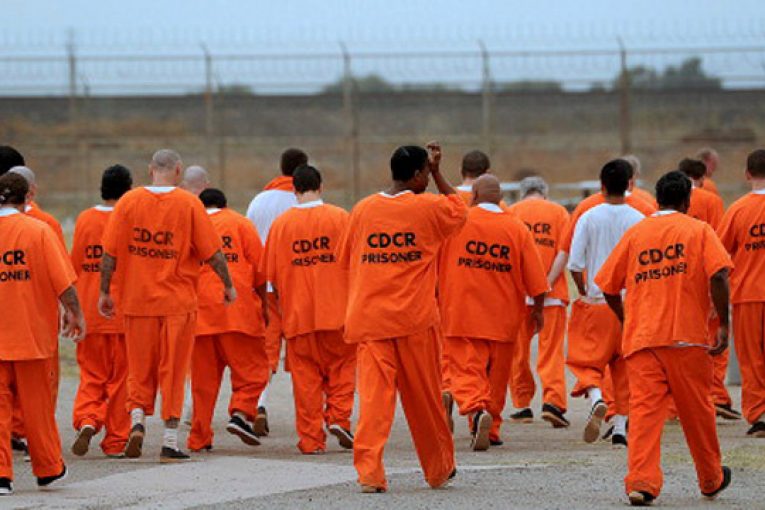
By Julietta Bisharyan and Yasmeen Khan
The Covid In-Custody Project partners with the Davis Vanguard to bring quantitative and qualitative reporting on the pandemic’s impact on county jails and CDCR to the public eye. This story is authored by the Covid In-Custody team.
CDCR Confirmed COVID-19 Cases and Outcomes
As of Jul. 25, there have been a total of 49,467 confirmed COVID-19 cases in the CDCR system – 52 of them emerged in the last two weeks. 51 cases are active in custody, while 606 have been released while active.
A total of 48,580 confirmed cases have been resolved since the start of the pandemic, and 231 individuals have died.
The death of an incarcerated person at the California Institution for Men (CIM) that occurred on Feb. 1, 2021 and another at the California State Prison-Solano (SOL) that occurred on Feb. 9, 2021, have since been determined to be COVID-related.
In the past two weeks, Sierra Conservation Center (SCC) has tested the most individuals, 62 percent of its population. Deuel Vocational Institution (DVI) has tested the least, 61 percent of its population.
A total of 132,856 tests have been administered cumulatively– 31,446 were conducted in the last two weeks across CDCR.
This week, CDCR announced that it will suspend the expedited release of incarcerated people who have less than 180-days to serve on their sentence, at the end of July.
There are currently 99,008 incarcerated persons in California’s prisons – a reduction of 23,401 since March 2020, when the prison outbreaks first began.
Effect on Public
The delta variant now accounts for the majority of COVID cases in California, making up 83 percent of reported cases — up from 50 percent on July 3, according to the Centers for Disease Control and Prevention.
As the delta variant circulates around California, incarcerated individuals and prison staff are at an especially high risk in overcrowded conditions and old age facilities.
Prison staff come in and out of the prison every day, and can be key transmitters of COVID variants to both prison residents and the public.
Yet, vaccination rates amongst prison staff remain low, with some institutions only having a staff vaccination rate as little as 26 percent.
In San Quentin, the latest CDCR figures reveal that 59 percent of staff vs. 84 percent of incarcerated people are fully vaccinated.
This disparity highlights the risk that the general population faces from low vaccination rates amongst CDCR staff, as this cohort can prove to be instrumental in reducing transmissions of new variants between prisons and the general public.
With vaccinations being mandatory in other institutions such as state universities and city departments, the CDCR has not taken on such policies to effectively prevent transmission from their staff.
The rising cases of the delta variant may warrant more restrictions and the return of mask mandates. Many countries are now recommending masks to be worn indoors and Los Angeles County has mandated that everyone wear masks in public indoor settings.
Vaccinations
As of Jul. 25, 2,237 patients have received their first round of vaccines statewide. 72,096 are fully vaccinated. 75 percent of the total prison population is either partially or fully vaccinated.
1,626 staff members have received their first round of vaccines statewide. 34,326 staff are fully vaccinated. 55 percent of the total staff population is either partially or fully vaccinated.
Currently, Correctional Training Facility (CTF) has vaccinated the most incarcerated individuals, 89 percent of its population. North Kern State Prison (NKSP) has vaccinated the least, just 51 percent.
Centinela State Prison (CEN) has tested the most staff members, 65 percent of its population. High Desert State Prison (HDSP), on the other hand, has vaccinated the least of its staff population, only 26 percent.
Reopening
According to CDCR, one facility in SCC is currently in Phase 1 in CDCR’s road to reopening plan. Phase 1 indicates that the prison has facilities that currently have an outbreak or are recovering from a recent outbreak of COVID-19.
Twenty-three facilities are in Phase 2, meaning there is partial reopening and modified gradual easing of Phase 1 restrictions.
212 facilities are in Phase 3, which indicates new normal programming. Reopening of programs and services will be reviewed and implemented weekly by the institution, according to the plan. If a facility experiences an outbreak, it must revert to Phase 1 restrictions.
California Correctional Center (CCC) has the most facilities, all 19, under Phase 3. Mule Creek State Prison (MCSP) has the most facilities in Phase 2, seven facilities total.
CDCR Staff
Governor Gavin Newsom terminated executive orders that put into the place the Stay-at-Home Order and the Blueprint for a Safer Economy effective Jun. 15, 2021, meaning State departments are no longer required to collect and report absentee data.
As a result, CDCR will no longer be collecting COVID-19 data for their employees.
The final cumulative employee COVID-19 data shows that there have been a total of 17,002 cases and 28 deaths among staff members statewide.
Division of Juvenile Justice
As of Jul. 20, there are no active cases of COVID-19 among youth at the Division of Juvenile Justice (DJJ) facilities. 205 cases have been resolved since the first case was diagnosed in June 2020.
A Year Ago Today
Last year, on Jul. 25, 2020, the 46th death of an incarcerated person was confirmed from COVID-19.
CDCR had announced coordination with Federal Receiver to identify 100 vacant beds at each institution that can be used for immediate isolation.
A year ago, California Institution for Women (CIM) instituted a facility-wide modified programming to address an increase in positive COVID-19 cases among the incarcerated population.
At the time, there was a total of 7,752 confirmed cases of COVID-19 across CDCR. In California, there were 452,831 cases.
References
https://www.sfchronicle.com/opinion/article/Letters-Prisons-spread-COVID-Staff-need-a-16333800.php
https://www.kget.com/health/coronavirus/kern-county-public-health-reports-3-new-delta-variant-cases/
https://www.cnn.com/2021/07/20/health/us-coronavirus-tuesday/index.html